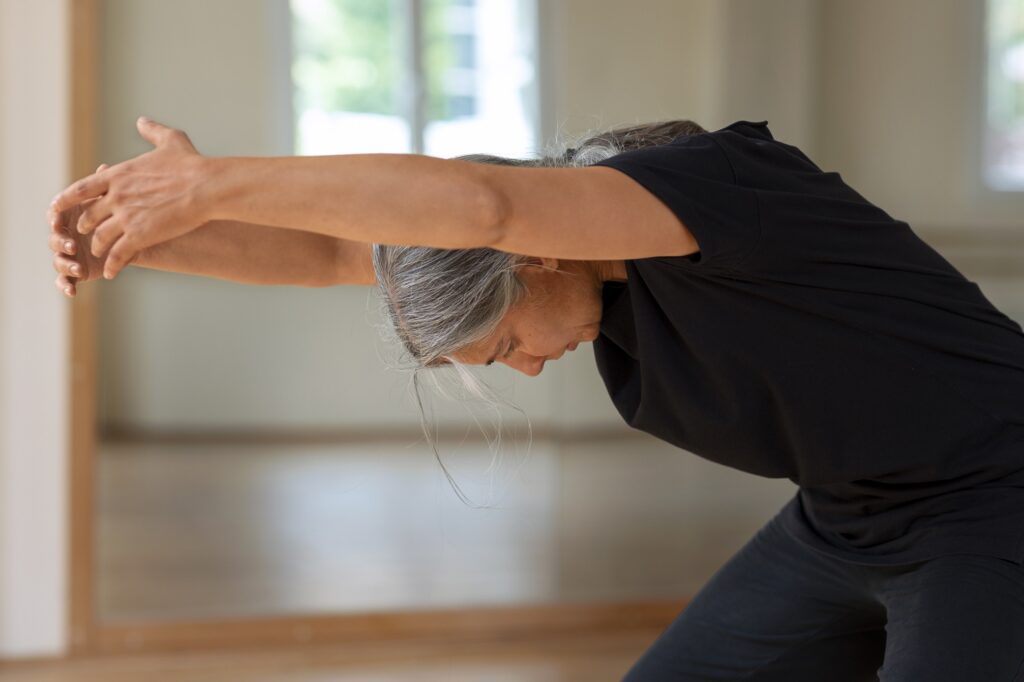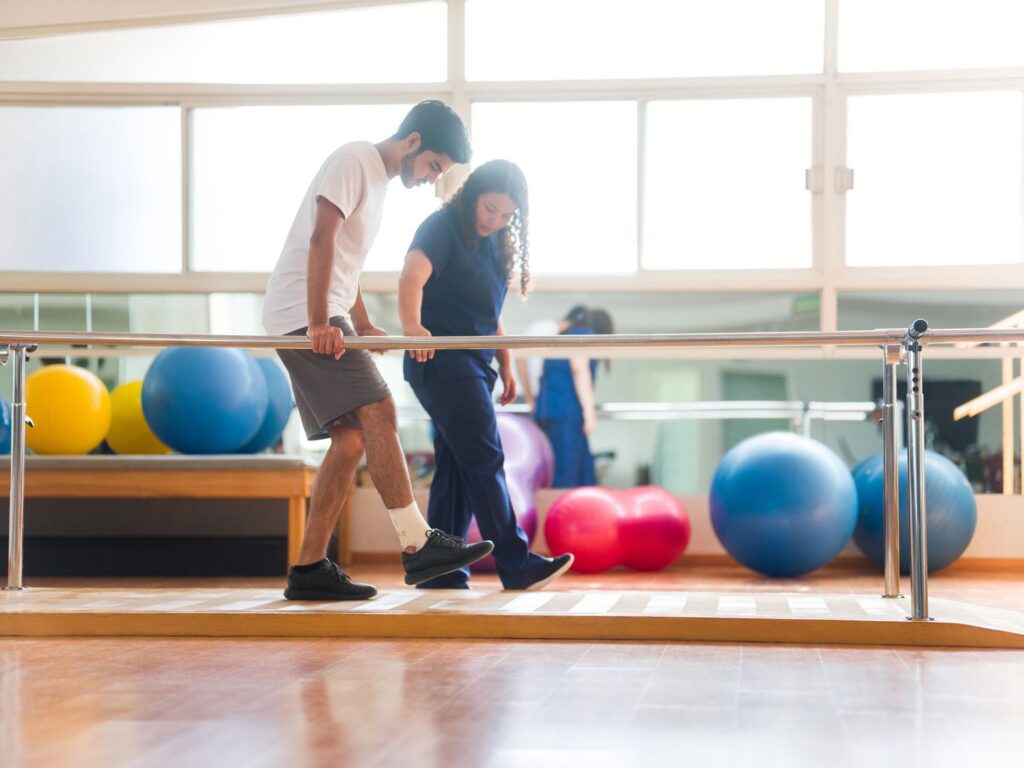Stroke recovery is a long and often challenging journey that requires focus, dedication, and the right set of tools to help regain lost functions. One of the most critical areas affected by a stroke is balance, which can hinder a person’s ability to move, walk, and carry out everyday tasks. Incorporating targeted exercises for stroke recovery is vital for rebuilding strength, improving coordination, and, most importantly, regaining balance. In this article, we will explore several balance exercises designed specifically for stroke survivors, helping them reclaim stability and enhance their overall quality of life.
Understanding the Importance of Balance Post-Stroke
A stroke can significantly disrupt the brain’s control over body movements, especially when it comes to maintaining balance. Many stroke survivors experience weakness or paralysis on one side of their body, a condition known as hemiparesis, which affects their ability to stay upright and move with ease. Without adequate balance, tasks as simple as standing up or taking a few steps can become daunting challenges.
Recovering balance is essential for regaining independence. The exercises for stroke recovery not only help improve physical stability but also reduce the risk of falls, which are common among stroke survivors. Additionally, better balance enhances the ability to perform daily activities, from getting dressed to walking, ensuring a more self-sufficient lifestyle. Before beginning any exercise regimen, it is always recommended to consult with a healthcare provider or rehabilitation specialist to tailor a program that best suits individual needs.
Exercises For Stroke Recovery – Regaining Balance Step by Step
The following exercises are designed to strengthen muscles, improve coordination, and enhance stability. Each exercise focuses on different aspects of balance recovery, targeting key muscle groups and neural pathways.
1. Weight Shifting
Weight shifting is an excellent introductory exercise for stroke survivors as it helps re-establish a sense of balance and coordination. This exercise encourages the body to adjust its center of gravity, improving overall stability.
How to perform:
- Begin by standing upright, holding onto a stable surface, such as a counter or sturdy chair.
- Slowly shift your weight from one leg to the other, lifting the opposite foot slightly off the ground.
- Hold this position for 5-10 seconds, then return to a neutral standing position.
- Repeat this exercise 10-15 times on each side.
Benefits:
Weight shifting helps reintroduce the concept of balance and improves muscle control in the legs and core. This exercise also increases body awareness, which is often diminished after a stroke.
2. Heel-to-Toe Walking
Heel-to-toe walking is a simple yet effective way to improve balance, coordination, and gait. It mimics the natural walking motion and encourages the stroke survivor to focus on stabilizing their body.
How to perform:
- Stand with your feet shoulder-width apart and begin walking by placing the heel of one foot directly in front of the toes of the opposite foot.
- Take slow, deliberate steps, ensuring each heel touches the toes of the other foot before lifting it off the ground.
- Keep your posture upright and your gaze forward.
- Perform this exercise for 3-5 minutes.
Benefits:
Heel-to-toe walking improves walking stability and coordination. It also enhances the brain’s ability to control lower body movements, vital for those recovering from stroke-induced mobility challenges.
3. Seated Marching
For those with more severe balance issues or mobility limitations, seated exercises offer a safe and effective way to improve balance and coordination. Seated marching is a low-impact exercise that strengthens leg muscles while enhancing balance from a seated position.
How to perform:
- Sit in a sturdy chair with your back straight and feet flat on the floor.
- Lift one knee towards your chest while keeping the other foot planted on the ground.
- Lower the leg and repeat the motion with the opposite leg, simulating a marching movement.
- Perform 10-15 repetitions on each side.
Benefits:
Seated marching helps strengthen leg muscles, which are essential for standing balance and walking. It also improves coordination between the upper and lower body, a skill often impaired after a stroke.
4. Standing on One Leg
This exercise helps develop balance by challenging the body to stabilize itself on one foot. While this may be a difficult task for stroke survivors, starting with short durations and gradually increasing can yield significant improvements.
How to perform:
- Stand near a stable surface or with a support device (e.g., parallel bars).
- Shift your weight onto one leg and slowly lift the opposite foot off the ground.
- Hold this position for as long as possible, aiming for at least 10 seconds, then switch legs.
- Repeat this exercise 5-10 times on each side.
Benefits:
Standing on one leg strengthens the muscles around the hips and knees, improving stability and control. This exercise is also a great way to assess progress in balance recovery over time.

5. Side Leg Raises
Side leg raises target the muscles in the hips, which play a critical role in maintaining balance during standing and walking. Strengthening these muscles helps stabilize the pelvis and lower body.
How to perform:
- Stand next to a wall or counter for support.
- Slowly lift one leg out to the side while keeping your torso upright and balanced.
- Lower the leg back to the starting position and repeat.
- Perform 10-15 repetitions on each leg.
Benefits:
Side leg raises help build strength in the hip abductors, which are key for improving side-to-side stability and preventing falls. Regular practice of this exercise can make walking and standing easier and safer.
6. Tandem Stance
Tandem stance is a static balance exercise that challenges the body’s ability to remain upright while in a narrow stance. This exercise is a great way to improve static balance, which is crucial for many daily activities.
How to perform:
- Stand with one foot directly in front of the other, as if walking on a tightrope.
- Hold this position for 20-30 seconds, using a stable surface for support if needed.
- Switch legs and repeat.
- Perform this exercise 5-10 times on each side.
Benefits:
The tandem stance helps improve static balance by forcing the body to maintain a narrow base of support. This exercise is particularly useful for regaining confidence while standing in place or moving in tight spaces.
7. Step-Ups
Step-ups are a functional exercise that mimics the action of walking up stairs. This movement not only improves balance but also builds strength in the legs, especially the quadriceps and glutes.
How to perform:
- Use a low step or sturdy platform.
- Step up with one foot, followed by the other, then step back down.
- Repeat this motion 10-15 times on each side, maintaining a steady and controlled pace.
Benefits:
Step-ups enhance lower body strength and coordination, both of which are essential for walking and climbing stairs. This exercise also improves balance by engaging multiple muscle groups simultaneously.
Tips for Safely Performing Balance Exercises
While these exercises for stroke recovery can significantly aid in improving balance, it’s crucial to approach them with caution. Here are a few tips to keep in mind:
- Use Support: Always have a stable surface or device to hold onto for support while performing standing exercises.
- Start Slow: Begin with short durations and fewer repetitions, gradually increasing as strength and confidence improve.
- Work With a Therapist: For best results, work with a physical therapist who can guide you through the exercises and ensure proper form.
- Stay Consistent: Balance improvement takes time, so consistency is key. Practice these exercises regularly for optimal recovery.
Conclusion
Recovering from a stroke is an ongoing process that requires determination, patience, and the right support system. Focusing on balance is a crucial component of stroke rehabilitation, as it directly impacts the ability to move independently and reduce the risk of falls. By incorporating these exercises for stroke recovery into your daily routine, you can steadily improve your stability, regain confidence, and enhance your overall quality of life. Remember, each step you take, no matter how small, brings you closer to reclaiming your independence and leading a fulfilling life post-stroke.
At Sukino Healthcare, we offer personalized rehabilitation services designed to support stroke survivors on their journey to recovery. Our expert team is here to help you every step of the way.
We are India’s first comprehensive continuum care provider. We provide multidisciplinary out of hospital care to acute and post-acute and chronically ill patients at our critical care facilities and your home.


